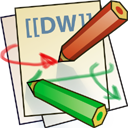Differences
This shows you the differences between two versions of the page.
| Both sides previous revisionPrevious revisionNext revision | Previous revision | ||
| smtstencil [2015/11/24 01:02] – srw7 | smtstencil [2020/11/04 18:02] (current) – swalde | ||
|---|---|---|---|
| Line 29: | Line 29: | ||
| - select all→right click→clone→3columns, | - select all→right click→clone→3columns, | ||
| - select Leftmost board, edit width to be 0.1mm (toolbar on the left) (make sure " | - select Leftmost board, edit width to be 0.1mm (toolbar on the left) (make sure " | ||
| - | - same as step 9, but with Rightmost board | + | - same as above, but with Rightmost board |
| - select all→right click→Scatter Group | - select all→right click→Scatter Group | ||
| - select all→right click→fill, | - select all→right click→fill, | ||
| Line 36: | Line 36: | ||
| - set velocity to 800 (it will go as fast as it can) and power to 30% | - set velocity to 800 (it will go as fast as it can) and power to 30% | ||
| - carve out | - carve out | ||
| + | |||
| + | ---- | ||
| + | ==Gerber to DXF (New, even more complicated workflow)== | ||
| + | |||
| + | Okay, but I have a Gerber file (that someone gave me, so, no, I can't re-export from Eagle/ | ||
| + | |||
| + | Simple! | ||
| + | |||
| + | - Open the GTP file in Gerbv | ||
| + | - Export as PNG, 1016 dpi (this is arbitrary and is a leftover from a previous attempted workflow) | ||
| + | - Load PNG into GIMP | ||
| + | - Set DPI in Image-> | ||
| + | - Colour-> | ||
| + | - Colour-> | ||
| + | - Select-> | ||
| + | - Select-> | ||
| + | - New Layer, white background | ||
| + | - Fill (whole selection) with black | ||
| + | - delete original layer | ||
| + | - Export as PNG | ||
| + | - Load PNG into Inkscape | ||
| + | - Trace Bitmap | ||
| + | - delete bitmap | ||
| + | - Note dimensions in mm | ||
| + | - save as DXF | ||
| + | - Load into Smartcarve | ||
| + | - Set the dimensions | ||
| + | |||
| + | * | ||
| + | - New possible process from here? (avoids having to " | ||
| + | - In The Gimp, choose Selection-> | ||
| + | - Open the paths dock. Right-click on the path and choose " | ||
| + | - Name the SVG file to export. | ||
| + | |||
| + | ==Gerber to DXF (This one failed with 45 degree rounded-end pads. gerbv totally screwed up the export)== | ||
| + | |||
| + | Okay, but I have a Gerber file (that someone gave me, so, no, I can't re-export from Eagle/ | ||
| + | |||
| + | Simple! | ||
| + | |||
| + | I did this all on Linux, so if things work different on Windows, please let me know. | ||
| + | |||
| + | Use **gerbv** to open the gerber file. Look at it. Use the Measure tool to measure some easy-to-repeat dimension. | ||
| + | |||
| + | Open that SVG file in **Inkscape**. | ||
| + | |||
| + | Now, open that DXF in **LibreCAD**. (This step might not be necessary, but follow along for now.) Remember that dimension I asked you to measure? | ||
